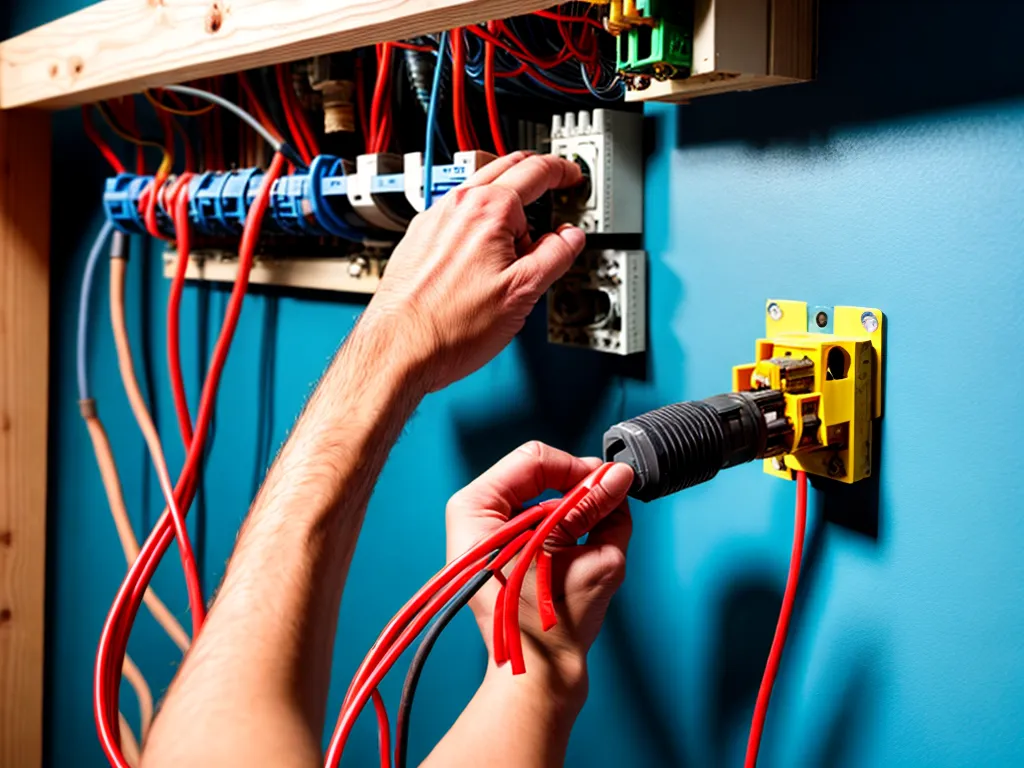
How to Work With Knob and Tube Wiring
What is Knob and Tube Wiring?
Knob and tube wiring was an early standardized method of electrical wiring used in buildings in the United States from about 1880 to the 1940s. It consisted of single insulated copper conductors run within wall cavities, passing through joist and stud drill-holes via protective porcelain insulating tubes, and supported on nailed-down porcelain knob insulators.
This old type of wiring has largely been replaced with modern electrical cables and conduit due to safety concerns and the difficulties of upgrading knob-and-tube circuits. However, some older homes still have functioning knob-and-tube wiring. As the owner of a home with this type of wiring, it's important to understand how to work with it safely.
Dangers and Challenges of Knob and Tube Wiring
Knob and tube wiring presents several potential risks:
-
Fire hazard - The insulation on old wiring can become brittle and crack over time, exposing the copper wire. This can lead to short circuits and overheating. Knob and tube wires are often in direct contact with flammable materials inside walls.
-
Insufficient grounding - Most knob and tube systems do not have a ground wire, increasing the risk of electrical shock. Ungrounded wires can also cause damage to sensitive electronics.
-
Inadequate for modern loads - These older circuits were not designed to handle the electricity needs of modern devices and appliances. Overloading them can lead to failures.
-
Difficult to modify - It's often impractical and expensive to upgrade knob and tube wiring. New wires cannot be easily fished through walls, and the old brittle insulation is easily damaged.
Working with knob and tube wiring requires great caution. Never assume a wire is safe to touch.
Best Practices When Working With Knob and Tube Wiring
If your home has knob and tube wiring that you cannot fully replace at this time, here are some best practices to follow:
Inspect and Test the Wiring
- Carefully examine where wiring is exposed for cracked, damaged, or frayed insulation. Replace any deteriorated sections that you find.
- Hire an electrician to do load testing to identify any problem areas getting too much current.
- Check that circuits are properly fused - do not use oversized fuses that could allow excessive current flow.
Use Caution During Any Renovations
- When doing any work in walls, attics, etc., be extremely careful not to inadvertently damage old wiring with tools or fasteners.
- Do not drill or cut into walls in areas where knob and tube wiring may be present without first using a wire detector to locate any hidden wires.
- Avoid using insulation blown into wall cavities, as this may overload the heat dissipation capacity of old wires.
Do Not Overload Circuits
- Be aware of the amperage capacity of each circuit and avoid using high-draw appliances like space heaters, air conditioners, power tools, etc.
- Never replace an existing 15 or 20 amp circuit breaker with a higher rated one. This dangerously exceeds the capacity of the original wiring.
Consider Upgrading or Replacing Knob and Tube Wiring
- For optimal safety, consider replacing knob and tube wiring with modern NM electrical cable and grounding. Consult an electrician on the most cost-effective way to do this over time.
- For important appliance circuits (kitchens, laundry, etc.), upgrade just these specific sections first if full rewiring is not feasible now.
With proper precautions, knob and tube wiring can still be used safely in many cases. But be very cautious, and make plans to fully upgrade to modern wiring when possible.
Frequently Asked Questions about Knob and Tube Wiring
Is knob and tube wiring dangerous?
Knob and tube wiring is generally considered more dangerous than modern electrical wiring due to the lack of grounding and risk of insulation damage over time. However, with proper precautions and usage within its electrical capacity, it can often still be used safely.
Can I run a ground wire with knob and tube wiring?
It is possible for an electrician to retrofit grounding wires with knob and tube circuits in some cases. But this may be very labor intensive. A full rewiring is recommended for optimal safety and functionality.
What appliances and devices should not be used on knob and tube wiring?
Avoid large appliances like stoves, air conditioners, electric hot water heaters, or anything else that draws a lot of current. Also do not use sensitive electronics and computers on ungrounded knob and tube circuits due to the risk of damage.
Is insurance more expensive if my home has knob and tube wiring?
Many insurance companies charge higher premiums or refuse to insure homes with knob and tube wiring due to the increased fire risk. Upgrading the electrical system often results in lower insurance rates.
How much does it cost to replace knob and tube wiring?
The cost to completely remove knob and tube wiring and rewire a home with modern NM cable and grounding can range from $8,000 to $15,000 depending on the home's size and accessibility. Upgrading one section or circuit at a time costs considerably less.
Conclusion
Knob and tube wiring requires an abundance of caution. Avoid overloading circuits, carefully inspect insulation, and use wire detectors before doing any structural work. For maximum safety and functionality, make plans to upgrade to modern grounded wiring over time. With proper precautions, knob and tube can still be used in many homes - but be very aware of its risks and limitations. Consulting an experienced electrician is highly recommended when evaluating your options.